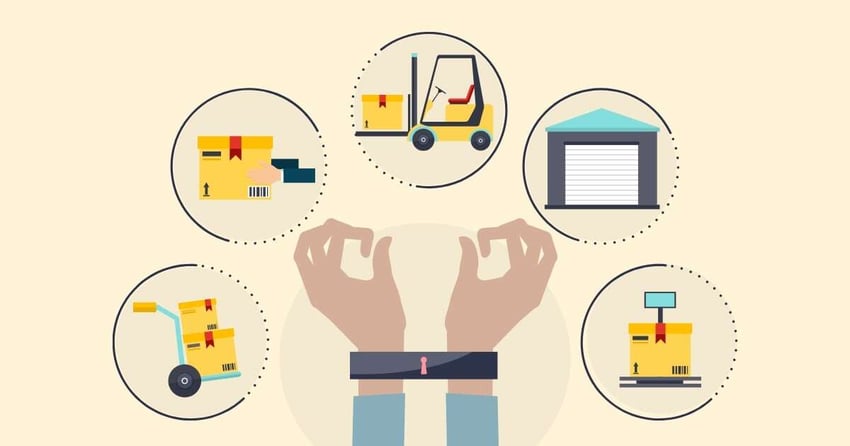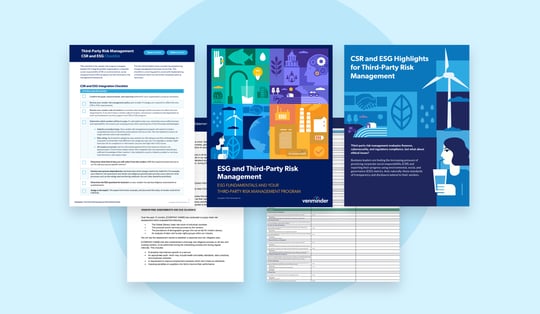A new law aimed at curbing forced labor in China could have serious repercussions for American businesses and consumers as it impacts the supply chain and third-party vendors. On June 21, 2022, the Uyghur Forced Labor Prevention Act (UFLPA) went into effect. UFLPA bans products from entering the United States if the products have any links to the Xinjiang Uyghur Autonomous Region, where Chinese authorities have repressed Uyghur Muslims and other minorities.
The UFLPA covers finished products that use components or raw materials from Xinjiang as well as components or raw materials linked to the Chinese labor programs that the U.S. Government calls coercive. Any product that contains even a small amount of raw material from Xinjiang will be banned from entering the United States and confiscated by U.S. Customs and Border Protection (CBP).
Biden administration officials have stated that they intend to fully enforce the law, which may result in U.S. authorities detaining or rejecting a significant number of imported products. This situation will likely cause serious problems for companies and lead to further supply chain disruptions. Companies may be forced to seek more expensive alternatives, and consumers may have to compete for scarce items, which may make inflation worse.
UFLPA Enforcement
CBP will take the lead as the main enforcement agency and can detain, seize, or exclude goods and issue civil penalties. Imported goods directly from Xinjiang and UFLPA Entities and illegally transshipped goods with inputs from Xinjiang will be prioritized.
High-Priority Enforcement
While UFLPA will affect millions of businesses worldwide, the U.S. has targeted four sectors for high-priority enforcement:
- Silica-based products (including polysilicon)
- Apparel
- Cotton and cotton products
- Tomatoes and related downstream products
Over the past few years, direct exports to the United States from the Xinjiang region have fallen dramatically. However, trade experts say a wide range of raw materials and components from Xinjiang are currently going to factories in China and other countries. While the UFLPA Act mostly affects importers, American manufacturers whose inputs include any of the eligible materials should review their supply chains and prepare for potential disruptions.

How Does UFLPA Compliance Affect a Third-Party Vendor Management Program?
All U.S. importers and manufacturers must comply with UFLPA. A robust third-party vendor management program is essential to your company’s survival if you are sourcing your products globally. Your organization will need to focus some additional effort on supply chain transparency to determine exactly who your suppliers are and what they provide. You’ll also need to know who their suppliers are and how their goods are manufactured. Understanding your supply chain is vital to avoiding supply chain disruptions and the seizure of your imported goods.
To provide compliance guidance, the Department of Homeland Security (DHS) published the Strategy to Prevent the Importation of Goods Mined, Produced, or Manufactured with Forced Labor in the People's Republic of China. The CBP has also published a supplement to the DHS publication called, Operational Guidance for Importers.
To comply with the UFLPA, importers and manufacturers should:
- Review their entire supply chain entities against the UFLPA Entity List
- Conduct supply chain due diligence that includes
- Supply chain tracing
- Supply chain management measures
Due Diligence
The CBP guidance recommends that importers and suppliers implement and administer a due diligence system to ensure they don’t import any goods mined, produced, or manufactured wholly or in part with forced labor. The DHS Strategy publication defines the following as key steps to creating effective supply chain due diligence:
- Engage stakeholders and partners
- Assess risks and impacts
- Develop a code of conduct
- Communicate and train across the supply chain
- Monitor compliance
- Remediate violations
- Conduct independent review
- Report
- Performance and engagement
Supply Chain Tracing
Map the entire supply chain up to raw materials suppliers as follows:
- Supplement information on the supplier entities with information on the workers and their working conditions
- Demonstrate the chain of custody from downstream to the finished product
- Trace each product input separately
Supply Chain Management
- Vet potential suppliers for forced labor concerns.
- Require corrective action by the supplier if forced labor is detected
- Specify the consequences of the supplier failing to take corrective action, including contract termination
- Manage and regularly update supply chain data
How to Get UFLPA Compliant
Consider taking a phased approach to UFLPA compliance:
Phase 1: Conduct a gap analysis of the organization’s current supply chain due diligence.
Phase 2: Take incremental steps to close any gaps. Develop a compliance playbook to document supply chain due diligence, supply chain traceability, and supply chain management.
Phase 3: Work with suppliers to map the supply chain of goods from raw materials to finished products and establish the chain of custody from the beginning to the buyer of the finished product.
Companies whose goods are detained at the U.S. borders will have 30 days to give the government “clear and convincing evidence” that their products don’t violate the law. Mapping your supply chain will help your organization avoid the seizure of your imports by purchasing only from suppliers that comply with the UFLPA. Meanwhile, creating supply chain transparency and investing in a robust TPRM program may also help your organization make a case against seizure and prove your goods are indeed compliant.
Though the outcomes of UFLPA remain to be seen, the law could potentially transform global supply chains.





.gif?width=1920&name=Sample-Graphic-Animation%20(1).gif)




